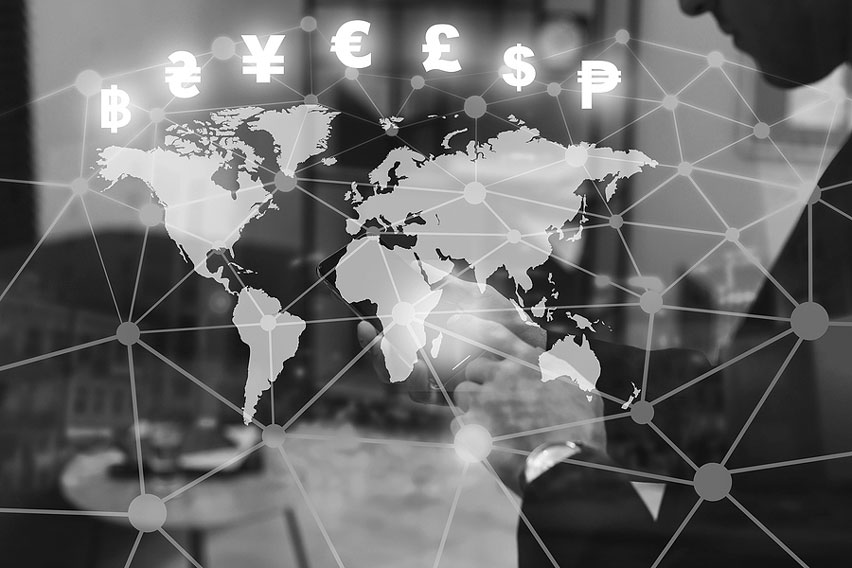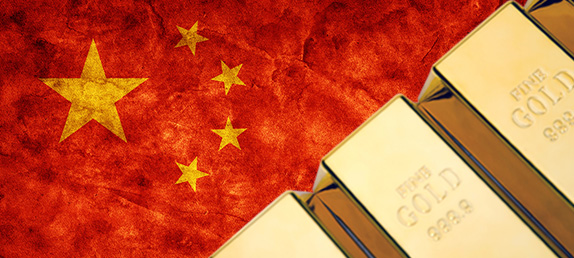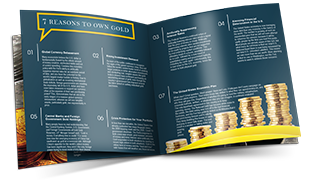Category: Silver
SilverSeek
Mon, 10/09/2023 – 07:03
A COT Report Certainly Worth Framing
Ed Steer
Sun, 10/08/2023 – 03:12

 While most people know about the greenback’s prominence, not many have an in-depth perspective on the dollar’s ascent from a relatively unimportant currency to the sole world reserve currency. Understanding when and how the dollar became the world reserve currency can shed some light on its strengths, weaknesses, and future.
While most people know about the greenback’s prominence, not many have an in-depth perspective on the dollar’s ascent from a relatively unimportant currency to the sole world reserve currency. Understanding when and how the dollar became the world reserve currency can shed some light on its strengths, weaknesses, and future.
What is the world reserve currency?
The US dollar is recognized as the world reserve currency because of its foundational role in the world economy. It functions as a benchmark for other currencies around the globe and is widely considered the most stable, liquid, and trustworthy currency in circulation. Central banks, international institutions, and individual investors across the world hold significant amounts of USD to hedge against market instability and uncertainty. The dollar is the currency of choice for international purchases, settling trades, and preserving wealth.
When did the dollar become the world reserve currency?
The US dollar officially became the primary world reserve currency in 1944 with the signing of the Bretton Woods Agreement. Following the destruction of WWII, 44 Allied nations set out to rebuild the global economy. As the strongest superpower at the time, America took a leading role in the design of the new world order. However, this is just a snapshot of a larger timeline of crucial events.
The Dollar’s Rise to Reserve Status
The Pound’s Plunge
The economic strength of the British Empire secured the pound as the first world reserve currency. Although the Crown came out victorious in back-to-back World Wars, the economic repercussions were far too extensive for a full recovery. Following WWI, it was clear the pound was slipping from its top position. The only question remaining was which currency, if any, had the staying power to replace what was once the most powerful money system in the world.
Great Depression & WWII
Despite having no official structure, the economies of the world were extensively interwoven in the early 20th century. All illusions of independence were shattered when the US stock market took a nosedive on Black Thursday in 1929, dragging the rest of the world into an extended depression. This economic downfall combined with the aftermath of WWII gave the US the unique opportunity to build a world economy around its vision.

The Petrodollar: A Retrospective
How To Prepare For The Impending Dollar Failure
Get Report – It’s Free!
Bretton Woods Conference
As mentioned before, the Allied nations gathered in the US in 1944 to discuss the future of global economics. The resulting Bretton Woods Agreement gave the rubber stamp approval for the dollar to become the world reserve currency. The economic and military might of the US made the dollar an obvious choice as the base currency. Under the new system, the dollar was backed by gold, and all foreign currencies were tethered to the dollar. The agreement also established the World Bank and International Monetary Fund.
Post-War Economic Boom
While other economies struggled through the mid-1950s, the US saw tremendous growth. The post-war economy had all the raw materials needed to succeed including technological advancements, significant government funding, a well-educated and motivated workforce, and pent-up demand. This massive boom lasted for decades and earned the dollar a reputation as a stable and reliable world reserve currency. Institutional investors and central banks from around the world sought out the dollar for wealth building and preservation.
Nixon Shock & Rise of the Petrodollar
The US officially abandoned the gold standard in 1971 when President Nixon ended the convertibility of USD to gold. This controversial move, pejoratively referred to as the Nixon Shock, ended decades of gold-backing for the dollar and sent shockwaves of uncertainty throughout the world economy. The solution was to have Saudi Arabia, one of the world’s leading oil producers, conduct international oil transactions exclusively in USD. The resulting petrodollar system has upheld the dollar’s dominance ever since.
Suggested Reading: Petrodollar Timeline: Track New & Historic De-Dollarization Events
What was the world reserve currency before the dollar?
Before the dollar rose to prominence, the British pound sterling was the defacto world reserve currency. The British Empire’s economic power, geopolitical influence, military might, internal stability, and technological leadership solidified the pound’s prestige in the burgeoning global monetary system. Eventually, the British currency buckled under the immense pressure of two World Wars, marking the first and only failure of a world reserve currency thus far.
The transition from the pound to USD had a permanent impact on the trajectory of global finances. Domestic benefits included a sharp increase in dollar demand, heightened influence on the world stage, and better price stability. Overall, the world experienced one of the greatest economic booms in human history under the dollar’s leadership during what became known as the “Golden Age of Capitalism”.
The US dollar has retained its status as the world’s reserve currency for a considerable time, allowing us to operate with substantial deficits. Should this change, it would likely lead to levels of inflation unprecedented in our experience.–Sr. Precious Metals Advisor Steve Rand
Will the dollar be replaced as the world reserve currency?
The US dollar remains the primary world reserve currency, but there’s no guarantee it will maintain that status. The global economy will always gravitate toward the most stable, liquid, and reliable currencies when searching for foundation. For the past several decades, the greenback maintained enough global confidence to keep its leading role. However, the tides are turning violently against the dollar as countries actively decouple from US influence. The process of de-dollarization is speeding up as the world sees the dollar as a liability instead of an asset. If and when another currency fulfills the needs of the world economy more convincingly, the US dollar might fall from its position as the world reserve currency.
Investing in a Post-Dollar World: Find out what you should own if the dollar collapses. Hint: It’s most likely NOT what you’re invested in right now.
Stay Updated to Stay Protected
Knowing when the dollar became the world reserve currency is only half the battle. Investors need to stay updated on the latest developments to preserve their wealth. Fortunately, we’ve put together a FREE Petrodollar Report with real-time updates so you can easily track the dollar’s performance.

Precious metal investors are increasingly confused and concerned as gold prices remain stagnant despite mounting economic pressures. Government spending is rising, inflation isn’t going anywhere, and the world is moving away from the dollar.
In this week’s The Gold Spot, Scottsdale Bullion & Coin Founder Eric Sepanek and Precious Metals Advisor Quentin Spillane explain the disconnect between economic health and gold prices, why the BRICS nations are a growing threat, and how investors can stay informed better.
Overspending Divides Republicans
Political infighting has consumed the Republican party over the past few weeks as a faction of the House of Representatives led by Matt Gaetz ousted former Speaker Kevin McCarthy. Although many view the move as controversial, nobody can say the opposition’s focus on government overspending is a waste of political capital.
Just last week, US debt blew past $33 trillion. The government’s relentless spending spree is proving ruinous for the country’s reputation as countries around the globe embark on the process of de-dollarization.
Countries around the world are starting to notice [the US] printing to infinity, and they’re starting to get worried we can’t pay back our debts.
What’s Going on With Gold Prices?
With the government spending-and-printing carousel running at full speed, many investors have anticipated gold prices to react favorably. After all, gold has centuries of proof as a reliable hedge against inflation. However, the yellow metal’s price performance has experienced strong resistance. What gives?

Get more out of your gold & silver investments.
Learn how…
Unlock Free Report
It’s essential to remember that there’s no direct line between inflation and gold prices, although they’re closely linked. In our highly centralized economy, the Federal Reserve can wield immense influence by raising interest rates. Currently, Fed policies are slowing down the economy and propping up the dollar. The flip side of that strategy is artificially weak gold.
Delayed Tailwinds for Gold
The Fed’s intervention can’t stave off the economic hangover caused by reckless fiscal policies forever. That’s a grim forecast for traditional markets and paper-backed assets but good news for gold prices. It’s only a matter of time before economic pressures bear down their full weight, inevitably acting as a boon to the value of gold.
Analysts from Hareaus1 spelled out this phenomenon of a delayed boost to gold prices by looking back at historical performance:
OPEC & BRICS Against the Dollar
The BRICS nations – a coalition of emerging economies – remain a considerable threat to US hegemony on the world stage. The economic powerhouse has flirted with the creation of a BRICS currency. The potential gold-backed alternative would directly rival the US dollar’s position as a world reserve currency.
Another troubling development is the expansion of the BRICS nations. At last month’s summit, six countries were brought into the fold. Most notably, Saudi Arabia and the United Arab Emirates, two of the most powerful OPEC+ nations, joined the group. This development mirrors an increasing trend of once-staunch, oil-producing US allies warming up to adversaries.
OPEC nations forming against us is one of the biggest concerns that we…have right now.–
Experts are already warning of oil prices reaching $100/barrel. This record-setting surge could lead to $7 gas not only in California but in Arizona and other areas of the country where fuel is typically more affordable. Such an escalation would have disastrous consequences for the middle class and, eventually, the entire economy.
Don’t Miss Out On Our FREE Reports
We’ve been receiving mountains of positive feedback from investors who have taken advantage of our free reports. These insightful exposure reports cover some of the most important topics that impact your financial future. Currently, we’re offering:
️️️️ Modern Monetary Theory (MMT) Report – Pull back the curtain on the hidden socialist agenda guiding the Fed’s failed fiscal policies.
Modern Monetary Theory (MMT) Report – Pull back the curtain on the hidden socialist agenda guiding the Fed’s failed fiscal policies.
️ Petrodollar Report – Discover the dollar’s rise to the world reserve currency and why its reign might not last for much longer.
Petrodollar Report – Discover the dollar’s rise to the world reserve currency and why its reign might not last for much longer.
 Digital Currency Report – Uncover the government’s secretive work on a Central Bank Digital Currency (CBDC) and learn about the threat of digital currencies.
Digital Currency Report – Uncover the government’s secretive work on a Central Bank Digital Currency (CBDC) and learn about the threat of digital currencies.
COT Silver Report – October 6, 2023
Silver COT Report
Fri, 10/06/2023 – 15:29
Why is China Buying Gold at Record Rates?

 The world is finally taking notice of China buying gold at record rates. The CCP’s continuous and exponential surge in gold accumulation sends a clear message: the US dollar’s hegemony is under attack. China has been openly scheming to topple America as the global ringleader, and this shiny metal might be the golden ticket to realizing that goal.
The world is finally taking notice of China buying gold at record rates. The CCP’s continuous and exponential surge in gold accumulation sends a clear message: the US dollar’s hegemony is under attack. China has been openly scheming to topple America as the global ringleader, and this shiny metal might be the golden ticket to realizing that goal.
China’s Gold Buying in Numbers
China buying gold isn’t a new development. In fact, it comes amidst a surge of record-shattering central bank gold buying. However, the combination of a sharp uptick in gold purchases and the country’s aggressive posture towards the US dollar places the CCP in the spotlight. Putting China’s gold buys into numbers can demonstrate the sheer scale of their consumption.
China is the second-largest buyer of the past two decades.
The topic of increased China gold buying might have recently entered geopolitical discourse, but history reveals a decades-long trend. Between 1999 and 2021, the CCP’s gold purchases accounted for 23% of global demand. With purchases totaling 1,552 tons, China was the second-largest gold buyer over the past few decades. Emerging countries such as Turkey, Russia, India, and Saudi Arabia dominated the top 10 buyers list too, but the US is nowhere to be found. Notably, most of the BRICS nations have led gold purchases in recent years.
China was the second-largest gold buyer in 2022.
In 2022, the topic of China buying gold started garnering major attention from economic leaders and retail investors alike. Within the year, China became the second-largest net buyer of gold, falling just behind Turkey. Beijing scooped up 62.21 tons of gold during this time, bringing total reserves into record-breaking territory. In contrast, America’s gold reserves remain relatively unchanged with less than half a percent change in value. This wouldn’t be so alarming if it were an isolated event, but 2023 has revealed otherwise.
China’s buying is ramping up in 2023.
China is keeping its foot on the gas with gold purchases reaching just over 554 tons in the first half of 2023, marking a 16.37% rise year-over-year. It seems that momentum will only pick up in the second half of the year with July marking the country’s ninth straight month of gold buying, adding an exclamation point to the regime’s record-setting spending spree. The People’s Bank of China reportedly topped their growing reserves by 23 tons which places total reserves at an impressive 2,136 tons.

Learn everything you should know about investing in precious metals.
Request the Free Guide
China is the world’s largest gold producer.
In an increasingly competitive global order, gold supply is just as crucial as gold demand. Unfortunately for the US, Beijing also dominates gold supplies. China, by orders of magnitude, is the world’s largest gold producer – a title it has held firmly since 2007. It accounts for 10% of the globe’s gold production. This stranglehold on supply gives China outsized influence on where physical gold is allocated. Recently, the CCP announced the discovery of the country’s largest gold mine holding an estimated 592.19 tons of gold worth roughly $28 billion. This buried treasure effectively increases China’s gold reserves by over 27% if the product remains within the country.
Why is China Buying Gold?
Promote economic independence.
It’s common practice for developing nations to hold vast amounts of their wealth in foreign reserves. As the world reserve currency, the US dollar offers greater stability and security than local currencies such as the yuan. However, this strategy comes with the trade-off of remaining dependent on the dollar. As a rising global power, China is now eager to be independent of American influence by converting its dollar reserves to gold holdings. With the potential collapse of the US dollar, the CCP obtains arguably greater stability by going for gold.
Undermine the US dollar.
China’s economic and geopolitical ambitions don’t stop short of its ever-expanding borders. The US dollar has been in Xi Jinping’s crosshairs as the Communist leader directly challenges US hegemony. The process of de-dollarization is much bigger than any single country, but the CCP is accelerating the shift away from the dollar at every turn. The sharp increase in China buying gold underscores Beijing’s intention to undermine the US dollar by opening dollar-free trade with other countries and building an alternative global economy that side-steps Western dominance.
Circumvent sanctions.
The recent trend of China buying gold coincides with an onslaught of sanctions against Beijing. The international community has ramped up the pressure as Xi Jinping cozies up with Russia amidst the Kremlin’s invasion of Ukraine. Gold’s inherent value, universal recognition, and price stability allow China to operate outside the Western-led global economy, nullifying the impact of sanctions. Russia is ramping up its gold purchases for the same reason, betraying an unintended consequence of these largely ineffective sanctions.
Promote the yuan.
China’s drastic increase in gold buying also serves to promote the dominance of its domestic yuan currency on the world stage. With a strong foundation of gold reserves, China can make an effective argument for the yuan’s dependability and stability.
“China…wants the Yuan to be broken free of the dollar.”–Precious Metals Advisor John Karow
While Beijing is gnawing away at the dollar’s dominance, it’s simultaneously providing the world economy with a viable alternative. This is evidenced by China’s promotion of the petroyuan among oil-producing countries and its support of a gold-backed BRICS currency.
Investors Find Protection in Precious Metals
China’s massive and prolonged spike in gold buying is happening amidst the backdrop of de-dollarization. This could spell disaster for investors who have built their entire portfolios on dollar-backed assets whether that’s stocks, bonds, or even real estate. Savvy investors are taking moves out of the playbooks of the central banks by pouring into precious metals for protection. Gold and silver have shown to be reliable hedges against inflation, especially during periods of economic uncertainty.
If you’re interested in learning more about diversifying your portfolio for optimized protection, request a FREE copy of our Precious Metals Investment Guide.